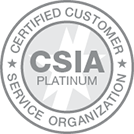Checklist for marketing professionals to use when creating non-COVID messages including marketing examples
Your association’s big news doesn’t have to wait
From annual conferences to networking events, in-person meetings, and more, the COVID-19 pandemic has changed a lot about how associations connect with their members and audiences. Now, as crisis communications give way to a new normal, associations are looking to understand how to market services and initiatives without striking the wrong social chord.
Mindful Communications
In a previous article, AH discussed the importance of managing association communications and understanding that association audiences — that is, members, prospects, industry partners, and others — have shifting priorities and interests amid the current circumstances.
Sarah Black, AH’s director of content and creative, reminds associations that members are potentially dealing with life-changing issues affecting their jobs and families. “There are going to be people for whom focusing on anything other than navigating COVID-19 isn’t possible — or of interest,” Black said. “But there are also going to be people who are looking for communications and opportunities right now. Those are the people we don’t want to let down by going dark.”
While communications can and should continue, when it comes to marketing, mindfulness is key. “It’s imperative that association marketers are sensitive to this time and aware of where their audience’s attention is,” said Karli Horn, AH’s corporate marketing manager. “You may not have their full attention, which means they’re not fully comprehending your message.”
Rather than demand your audience’s potentially limited attention, or compromise the impact of your marketing, consider a more modest approach to marketing communications that’s appropriate for both the audience and the event.
Tailored Messaging Differs by Audience
AH recently had to carefully weigh the launch of its new brand and website, which coincided with the national emergency declaration and COVID-19 closures rippling across America. It was determined that a full launch of the new brand and website would be postponed.
“We have this exciting launch that many people had been working toward for months and stakeholders who were looking for the launch,” said Sabina Gargiulo, AH’s vice president of industry relations and marketing. “So, much like our client partners having to pivot to virtual events or change plans drastically, we had to be nimble and open to changing our plans to something more appropriate for the time.” AH’s approach involved highly personalized messaging to an internal audience with later plans for a full-scale brand and website launch.
The strategy behind the soft launch was two-fold: to connect with an engaged internal audience that was anticipating and looking for communication about the launch, while also maintaining mindful communications that align with the social climate. Associations seeking to market new programs and initiatives may follow suit.
Gargiulo notes that a customized approach, specifically segmented for different targeted audiences, is a vital marketing tactic. “Associations’ marketing messaging to their audiences needs to look much more personalized and tailored to fit the audience,” said Gargiulo.
This is increasingly being accomplished through persona-based marketing, a marketing philosophy AH develops and implements for its client partners.
“We’ve been doing more work to help client partners clearly identify who their audiences are,” Gargiulo said. “Then we create personas for those audiences, which inform content development and other marketing messaging.”
According to Black, personas are particularly valuable for crafting marketing messaging that resonates with target audiences. “It’s one thing to know your audience, but knowing the concerns, challenges, and opportunities of the people making up that audience helps you create messaging that’s that much closer to bulls eye,” says Black. “It feels personal. It feels relevant. Most important, it’s the message they want to receive from you. With everything that’s going on now, we can’t afford to be sending the wrong message.”
Up the Social Ante
Any kind of social emergency sends people online with increased frequency looking for information and updates. This kind of traffic represents an opportunity for associations to experiment with marketing tactics they may not have otherwise employed. “For a lot of associations, this is their chance to really shine,” Gargiulo said. “This is an opportunity for them to really think a bit more out of the box and maybe get very strategic while asking, ‘what do our members need from us right now?’”
Paid social media posts, like Facebook Ads, offer a way for associations to create highly targeted messaging and deliver it to a very specific audience. Paid social advertising allows marketers to specify geographic location, employer, job title, age, gender, and more as ways to filter messaging to select audiences.
“AH’s client partners are increasingly utilizing paid social media advertising campaigns as we’re navigating COVID-19,” Gargiulo said. “When you’re running a paid social campaign, you can get incredibly granular in terms of who sees your ad, and that kind of control is appreciated, especially now, to ensure that only the appropriate audience gets that communication.”
Reframing the Messaging
Traditional marketing messaging needs a new angle to resonate with audiences right now. Horn recommends shifting to a message that promotes associations’ programs or initiatives within the context of COVID-19 closures.
“Members and prospects already understand that webinars and on-demand learning can be done from home,” says Horn. “A more effective message might be ‘now is the time to invest in yourself.’ It’s positive and encouraging, and acknowledges that right now, things are different.” That acknowledgement may mean the difference between your marketing connecting with your audience or being perceived as disconnected from their reality.
Another tactic Black recommends is anticipating your audience’s concerns or objections, especially around event marketing. “Promoting in-person events in the far future isn’t taboo, but we still do not know how long stay-at-home orders and travel restrictions will continue, so associations should have a plan B ready and communicate that from the start,” said Black. “Let attendees know what the plan is if the event has to be canceled; what will happen to their registration? Will it be applied to a virtual event, or maybe to the following year’s registration? That knowledge can go a long way.”
Black also recommends that associations shift messaging to a more patient tone. “Instead of trying to get members’ attention, we're shifting to a mentality of ‘we're here when you need us,’" she said.
A New Way to Network
It’s time for association communicators to leverage their networks to get their messages out in a more thoughtful way. “Sharing exciting news with a smaller, more focused audience that will have the highest interest in that announcement means that only the people who want that message will get it,” said Horn. In addition, they can serve as ambassadors of the message, pushing it out to their networks when they deem appropriate.
“It can be hard to sit on big news for an extended period of time, so a soft launch might be the right answer for your big news,” said Horn. AH decided to launch its new website and brand only to internal stakeholders, but that internal launch was just as much about strategy as it was tact. “We launched to AH’s internal network and let them do the talking for us,” said Horn.
While marketing events, services, and initiatives to association audiences continues to be necessary, the COVID-19 pandemic requires a softer, more thoughtful touch. Mindful, tailored communications with the right tone will resonate with target audiences more effectively and ultimately help your association marketing succeed during a difficult time.




